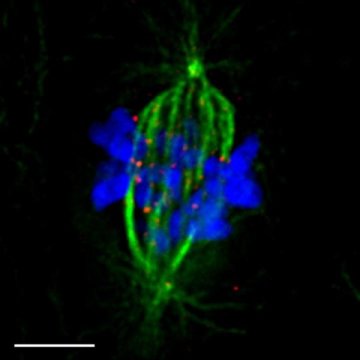현재 위치:홈 > 뉴스현황 > Press Events > Protein Pair Help Tr...
저자: 업로드:2017-07-31 조회수:
Cell division is an essential process in humans, animals and plants as dying or injured cells are replenished throughout life. Cells divide at least a billion times in the average person, usually without any problem. However, when cell division goes wrong, it can lead to a range of diseases, such as cancer, and problems with fertility and development, including babies born with the wrong number of chromosomes as in Down's syndrome.
During cell division, the replicated chromosomes are pulled apart so that one complete set ends up in each daughter cell. Researchers at Queen Mary University of London (QMUL) have now identified two small proteins that play a key role in ensuring that this chromosome transportation is carried out correctly. Viji Draviam, Ph.D., and colleagues hope their discoveries will provide new insights into molecular mechanisms that can cause aneuploidy, a condition in which cells have too many or too few chromosomes. The findings could also provide the foundation for future treatments for some cancers and rare aneuploidy-related diseases, and potentially even help to improve fertility treatment.

"Aggressive cancers often display irregular numbers of chromosomes,” Dr. Draviam stated. “Normal human cells usually have 23 pairs of chromosomes; however, cancer cells can have 50 or more chromosomes. To specifically diagnose the underlying reason for aneuploidy and also to specifically target or treat aneuploidy, one has to understand what causes aneuploidy in the first place."
During cell division the chromosomes are divided between two daughter cells by the actions of rope-like structures called microtubules that comprise the mitotic spindle. The microtubules capture the chromosomes at a protein structure called the kinetochore and pull the two sets of DNA apart, explained Dr. Draviam, who is senior lecturer in structural cell and molecular biology from QMUL's School of Biological and Chemical Sciences.
"We have identified two proteins—tiny molecular machines—that enable the correct attachment between the chromosomes and microtubules. When these proteins don't function properly, the cells can lose or gain a chromosome. This finding gives us a glimpse of an important step in the process of cell division."
Working with colleagues at the University of Cambridge, U.K., and the European Molecular Biology Laboratory in Heidelberg, Germany, the QMUL team used high-resolution microscopy to film human cells. They found that two proteins, Aurora-B kinase and BubR1-bound protein phosphatase 2 (PP2A), work in opposition to control the attachment of microtubules to chromosomes, through the addition or removal of phosphate groups.